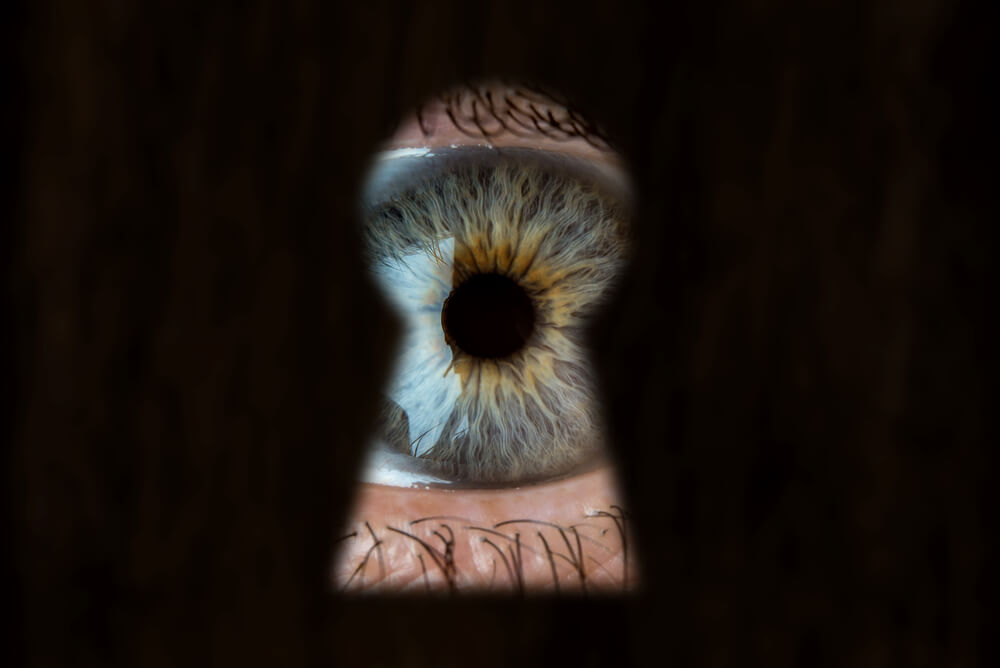Sexual Disorders: The Main Characteristics


Escrito y verificado por el psicólogo Bernardo Peña
Sexual disorders are those that have to do with a dysfunction in the sexual response (arousal, orgasm, etc.), or with a deviation of the object of sexuality (pedophilia, fetishism, etc.).
In the same way, they also embark all those disorders derived from one’s sexual identity. In this article, we’ll take a look at the main sexual disorders, including their characteristics, symptoms, and possible causes.
The different types of sexual disorders
There are several types of sexual disorders. Among them, we find the following:
- Gender dysphoria: Occurs when the individual expresses that they are of a different sex from their biological sex
- Paraphilias: Sexual activity directed toward unusual objects and/or situations
- Sexual dysfunctions: Inhibitions of desire and other disorders of the sexual response cycle.
Sexuality disorders: Gender dysphoria

Formerly called Sexual Identity Disorder, it’s defined as the dissatisfaction an individual experiences regarding their biological sex due to the fact that there’s a persistent identification or they assume that they belong to the opposite sex. This psychological disorder is accompanied by deep dissatisfaction with the assigned sex, as well as repudiation or discomfort toward the characteristics, both primary and secondary, that are specific to each sex.
For example, a person that is biologically a man (XY chromosomes) who identifies as a woman has a tendency to reject their penis. Subjectively, they’ll identify as a woman–that’s what gender refers to. Or, for example, the case of a biological woman (XX chromosomes) who identifies as a man will reject their breasts and vulva.
This discomfort is generally accompanied by the desire to want to change these physical characteristics, as well as to live like a person of the opposite sex. It covers psychological, sexual, cultural, social, physical, and emotional aspects.
For this reason, on many occasions, people resort to hormonal, anatomical, and genital changes, as is the case with sex reassignment operations. The cause of this type of alteration hasn’t been proven, although they seem to go hand in hand with social and cultural issues.
Gender dysphoria: Diagnostic criteria

The DSM-5 diagnostic criteria for this disorder include:
- A strong incongruity between a person’s biological sex and that which they experience and express
- A strong desire to shed the primary and secondary sexual characteristics of their biological sex
- The desire to possess the primary and secondary sexual characteristics of the opposite biological sex
- A desire to be treated as a member of the other sex
- The conviction that one has the feelings and reactions of the other sex
Discover: Personality Disorders
Sexuality disorders: Sexual dysfunctions
Sexual dysfunctions are an alteration in some of the phases of the sexual response, whose phases are:
- Desire: Sexual fantasies, hormonal changes, and desire for sexual activity appear.
- Excitation: Increases muscle, respiratory, and cardiac tension. In men, vasodilation is mediated by the release of nitric oxide and causes the penis to become erect. In women, it involves the dilation of the vagina and its lubrication.
- Plateau: It consists of maintaining the excitement phase in preparation for orgasm.
- Orgasm: There are involuntary muscle contractions, and breathing and heart rate reach their maximum. A strong sensation of pleasure takes place, the intensity of which varies depending on the level of arousal of the individual.
- Resolution: Muscle tension is released, and the body relaxes.
When facing sexual dysfunction, it’s important to know if the sexual response has always been this way or has been acquired (the person didn’t have it before, and at a certain moment, it appears).
Also, it’s important to take into account whether it’s generalized (it occurs in all situations) or situational (it only appears in some situations). Likewise, if they’re produced exclusively by psychological or organic factors.
Sexual dysfunctions: Disorders regarding sexual desire
Among the disorders of sexual desire, we find hyposexuality, hypersexuality, and sexual aversion syndrome.
Hyposexuality
This disorder is characterized by a marked decrease in sexual appetite with few fantasies. Its main etiology is emotional problems.
At the same time, on a biological level, it can be caused by neurological problems. It can occur in comorbidity with epilepsy and depression. It can also take place due to damage to the limbic system and endocrine imbalance, and it can be induced by medication.
Hypersexuality

Hypersexuality refers to the increase in libido and sexual activity, the latter being a very relevant characteristic. The etiology of this pathology can be mania, schizophrenia, neurological disorders, and hysteria.
In addition, it can be caused by injuries to the diencephalon or damage to this area due to inflammation or tumor. Klüver-Bucy syndrome also causes hypersexuality. Other possible causes of this disorder are hormonal alterations generated by hypercorticism, hyperthyroidism, and hyperandrogenism.
Hypersexuality causes people to repeatedly stimulate themselves sexually in the face of visual stimuli or thoughts. It generally occurs in people who’ve been sexually repressed during the early stages of development (childhood and adolescence).
This disorder occurs very frequently in people with a personality disorder or other mental disorders, such as satiriasis (exclusively in men) or nymphomania (exclusively in women). Both are popularly known as “sex addiction.”
In fact, both of these disorders are characterized by an increase in libido and sexual desire, which causes sexual activities to increase.
Sexual dysfunctions: Disorders regarding sexual arousal
In men, we find erectile dysfunction and, in women, sexual arousal disorder.
Erectile disorder in men
Also called erectile dysfunction, it’s defined as the inability to achieve or maintain an erection, either persistent or recurrent (when it doesn’t always occur). This disorder prevents initiating or maintaining sexual relations, as penetration can’t be consummated, which, in turn, generates a deterioration in the couple’s interpersonal relationship.
This disorder occurs in approximately 18% of men between the ages of 50 and 59 years of age and, subsequently, this figure increases as a person’s age advances due to the problems of cardiovascular and arteriosclerotic functioning that are typical of old age, as it’s a well-known fact that the correct blood supply to the penis is the basis for erections.
Sexual arousal disorder in women
This disorder is defined as the inability to maintain the vaginal lubrication response that’s typical of the arousal stage. As in the case of erectile disorder in men, it can be recurrent or persistent. Likewise, it can cause discomfort and deterioration in the couple’s relationship.
In both cases (erectile disorder in men and sexual arousal disorder in women), the diagnosis will be positive as long as it’s not caused by the use of psychotropic drugs, medical illnesses, or other psychopathological disorders that aren’t of a sexual nature.
Sexual dysfunctions: Orgasm disorders
These are disorders that prevent an adequate orgasm. Examples include premature ejaculation, delayed ejaculation, or female orgasmic disorder.
Premature ejaculation

Premature ejaculation is the loss of control over the ejaculatory reflexes, which generate an almost immediate ejaculation in response to a mild sexual stimulus (or before, during, and even shortly after intercourse).
This disorder generates discomfort and problems in interpersonal relationships. Premature ejaculation is present in around 30% of the male population, which makes it the most common sexual disorder among men. It can be acquired or exist from birth and can be generalized or situational.
In addition, three levels can be differentiated:
- Mild, which occurs when the sexual stimulus causes the ejaculatory response in a lax 30 to 60 seconds.
- Moderate, when the ejaculatory response takes place between 15 and 30 seconds after the presence of the stimulus.
- Severe, when ejaculation occurs in less than 15 seconds.
Despite this differentiation of levels, the diagnostic criterion that determines the premature ejaculation disorder is given when ejaculation occurs before the person wants it, and this problem occurs for at least six months.
Delayed ejaculation
The absence of ejaculation (anejaculation) or the presence of it in a delayed way (30-45 minutes) after penetration or before any sexual activity.
This disorder is generally psychological in nature, although it can also occur as a consequence of organic alterations caused by the consumption of drugs, especially antidepressants, and neurological damage such as trauma to the pelvic nerves or spinal cord.
Among the psychological etiologies, we have a lack of interest in the sexual partner, conditioning by masturbation, and traumatic events, such as having been discovered while having “illicit” sexual relations.
Female orgasmic disorder

Female orgasmic disorder is defined as the inability to reach orgasm or a delay in reaching orgasm, as well as a marked decrease in the intensity. The diagnosis of this disorder includes its prevalence for a period of six months and in at least 75% of sexual relations.
Sexual dysfunctions: Sexual pain disorders
Among these dysfunctions, we have dyspareunia and vaginismus.
Dyspareunia
Dyspareunia occurs in approximately 5% of men and 15% of women. The person has pain (in the genital area or elsewhere) at the time of the sexual response. This disorder is ruled out in the case that it’s caused by a medical illness.
Vaginismus
Not to be confused with vaginitis, these are involuntary spasms in the outer third of the vagina. If penetration is attempted, pain is experienced. It appears more in young women and in lower cultural levels.
Sexuality disorders: Paraphilias

Formerly known as sexual deviations, these are related to a sexual activity in which the object, the person, or the practices aren’t suitable. There are many paraphilias, but there’s no alteration in the sexual response, as they involve all of the phases mentioned above.
Types:
- Pedophilia (children)
- Incest (relatives)
- Zoophilia (animals)
- Coprophilia (feces)
- Urophilia (urine)
- Klismafilia (enemas)
- Fetishism (inanimate objects)
Practice:
- Frotteurism: Rubbing the genitals of another person without their consent.
- Rape: With violence and without the other person consenting to it.
- Voyeurism: Sexual arousal when observing other people in the sexual act.
- Exhibitionism: Showing one’s genitalia to others without them expecting it.
- Sadism: Hurting or humiliating one’s sexual partner.
- Masochism: Voluntarily receiving harm and humiliation from one’s sexual partner.
The criteria for diagnosing sexual paraphilias include the following:
- Any of these characteristics must appear for a duration of at least six months.
- It must cause discomfort in oneself or others.
- They can involve fantasies or thoughts that arouse the person.
Fetishism
Any object can be a fetish, although underwear and shoes stand out. It may also be a part of the body (biases). There are three types:
- Arousal is produced by tactile stimulation.
- Those in which it’s the object that produces the excitement.
- Cross-dressing fetishism: The person is turned on by clothing of the other sex.
Voyeurism and exhibitionism

It’s not uncommon for these behaviors to appear in the same person. They’re excited by the possibility of spying on others who are having sexual encounters and showing their body to others unexpectedly.
Sadism and sexual masochism
A sadist hurts or humiliates their sexual partner while deriving sexual pleasure from doing so. On the other hand, masochists derive sexual pleasure from receiving harm and humiliation from a partner.
Pedophilia and incest

- Incest: Sexual relationships are maintained between relatives (father-daughter, uncle-niece, etc.). While there are those who don’t consider the relationships between siblings to be incest, in general, it’s labeled as such.
- Pedophilia: Pedophiles are sexually aroused by children.
Incestuous people tend to get turned on by adult women, while pedophiles don’t. Both may physically abuse children and use tricks to entangle them, confuse them, or even make them think that it’s the right thing to do.
This has very negative consequences for the victims because they can develop a lot of feelings of guilt.
You may be interested: Stealthing: A Dangerous Sexual Practice
Sexual disorders: Final comments
In conclusion, throughout this article, we’ve seen the main sexuality disorders. Also, in some cases, their possible causes. It should be noted that sexual disorders affect millions of people in the world of all ages, sex, race, religion, and economic situation.
However, there are adequate medical and psychological treatments to treat them. If this is the case, we always recommend going to a specialist for proper diagnosis and treatment.
Sexual disorders are those that have to do with a dysfunction in the sexual response (arousal, orgasm, etc.), or with a deviation of the object of sexuality (pedophilia, fetishism, etc.).
In the same way, they also embark all those disorders derived from one’s sexual identity. In this article, we’ll take a look at the main sexual disorders, including their characteristics, symptoms, and possible causes.
The different types of sexual disorders
There are several types of sexual disorders. Among them, we find the following:
- Gender dysphoria: Occurs when the individual expresses that they are of a different sex from their biological sex
- Paraphilias: Sexual activity directed toward unusual objects and/or situations
- Sexual dysfunctions: Inhibitions of desire and other disorders of the sexual response cycle.
Sexuality disorders: Gender dysphoria

Formerly called Sexual Identity Disorder, it’s defined as the dissatisfaction an individual experiences regarding their biological sex due to the fact that there’s a persistent identification or they assume that they belong to the opposite sex. This psychological disorder is accompanied by deep dissatisfaction with the assigned sex, as well as repudiation or discomfort toward the characteristics, both primary and secondary, that are specific to each sex.
For example, a person that is biologically a man (XY chromosomes) who identifies as a woman has a tendency to reject their penis. Subjectively, they’ll identify as a woman–that’s what gender refers to. Or, for example, the case of a biological woman (XX chromosomes) who identifies as a man will reject their breasts and vulva.
This discomfort is generally accompanied by the desire to want to change these physical characteristics, as well as to live like a person of the opposite sex. It covers psychological, sexual, cultural, social, physical, and emotional aspects.
For this reason, on many occasions, people resort to hormonal, anatomical, and genital changes, as is the case with sex reassignment operations. The cause of this type of alteration hasn’t been proven, although they seem to go hand in hand with social and cultural issues.
Gender dysphoria: Diagnostic criteria

The DSM-5 diagnostic criteria for this disorder include:
- A strong incongruity between a person’s biological sex and that which they experience and express
- A strong desire to shed the primary and secondary sexual characteristics of their biological sex
- The desire to possess the primary and secondary sexual characteristics of the opposite biological sex
- A desire to be treated as a member of the other sex
- The conviction that one has the feelings and reactions of the other sex
Discover: Personality Disorders
Sexuality disorders: Sexual dysfunctions
Sexual dysfunctions are an alteration in some of the phases of the sexual response, whose phases are:
- Desire: Sexual fantasies, hormonal changes, and desire for sexual activity appear.
- Excitation: Increases muscle, respiratory, and cardiac tension. In men, vasodilation is mediated by the release of nitric oxide and causes the penis to become erect. In women, it involves the dilation of the vagina and its lubrication.
- Plateau: It consists of maintaining the excitement phase in preparation for orgasm.
- Orgasm: There are involuntary muscle contractions, and breathing and heart rate reach their maximum. A strong sensation of pleasure takes place, the intensity of which varies depending on the level of arousal of the individual.
- Resolution: Muscle tension is released, and the body relaxes.
When facing sexual dysfunction, it’s important to know if the sexual response has always been this way or has been acquired (the person didn’t have it before, and at a certain moment, it appears).
Also, it’s important to take into account whether it’s generalized (it occurs in all situations) or situational (it only appears in some situations). Likewise, if they’re produced exclusively by psychological or organic factors.
Sexual dysfunctions: Disorders regarding sexual desire
Among the disorders of sexual desire, we find hyposexuality, hypersexuality, and sexual aversion syndrome.
Hyposexuality
This disorder is characterized by a marked decrease in sexual appetite with few fantasies. Its main etiology is emotional problems.
At the same time, on a biological level, it can be caused by neurological problems. It can occur in comorbidity with epilepsy and depression. It can also take place due to damage to the limbic system and endocrine imbalance, and it can be induced by medication.
Hypersexuality

Hypersexuality refers to the increase in libido and sexual activity, the latter being a very relevant characteristic. The etiology of this pathology can be mania, schizophrenia, neurological disorders, and hysteria.
In addition, it can be caused by injuries to the diencephalon or damage to this area due to inflammation or tumor. Klüver-Bucy syndrome also causes hypersexuality. Other possible causes of this disorder are hormonal alterations generated by hypercorticism, hyperthyroidism, and hyperandrogenism.
Hypersexuality causes people to repeatedly stimulate themselves sexually in the face of visual stimuli or thoughts. It generally occurs in people who’ve been sexually repressed during the early stages of development (childhood and adolescence).
This disorder occurs very frequently in people with a personality disorder or other mental disorders, such as satiriasis (exclusively in men) or nymphomania (exclusively in women). Both are popularly known as “sex addiction.”
In fact, both of these disorders are characterized by an increase in libido and sexual desire, which causes sexual activities to increase.
Sexual dysfunctions: Disorders regarding sexual arousal
In men, we find erectile dysfunction and, in women, sexual arousal disorder.
Erectile disorder in men
Also called erectile dysfunction, it’s defined as the inability to achieve or maintain an erection, either persistent or recurrent (when it doesn’t always occur). This disorder prevents initiating or maintaining sexual relations, as penetration can’t be consummated, which, in turn, generates a deterioration in the couple’s interpersonal relationship.
This disorder occurs in approximately 18% of men between the ages of 50 and 59 years of age and, subsequently, this figure increases as a person’s age advances due to the problems of cardiovascular and arteriosclerotic functioning that are typical of old age, as it’s a well-known fact that the correct blood supply to the penis is the basis for erections.
Sexual arousal disorder in women
This disorder is defined as the inability to maintain the vaginal lubrication response that’s typical of the arousal stage. As in the case of erectile disorder in men, it can be recurrent or persistent. Likewise, it can cause discomfort and deterioration in the couple’s relationship.
In both cases (erectile disorder in men and sexual arousal disorder in women), the diagnosis will be positive as long as it’s not caused by the use of psychotropic drugs, medical illnesses, or other psychopathological disorders that aren’t of a sexual nature.
Sexual dysfunctions: Orgasm disorders
These are disorders that prevent an adequate orgasm. Examples include premature ejaculation, delayed ejaculation, or female orgasmic disorder.
Premature ejaculation

Premature ejaculation is the loss of control over the ejaculatory reflexes, which generate an almost immediate ejaculation in response to a mild sexual stimulus (or before, during, and even shortly after intercourse).
This disorder generates discomfort and problems in interpersonal relationships. Premature ejaculation is present in around 30% of the male population, which makes it the most common sexual disorder among men. It can be acquired or exist from birth and can be generalized or situational.
In addition, three levels can be differentiated:
- Mild, which occurs when the sexual stimulus causes the ejaculatory response in a lax 30 to 60 seconds.
- Moderate, when the ejaculatory response takes place between 15 and 30 seconds after the presence of the stimulus.
- Severe, when ejaculation occurs in less than 15 seconds.
Despite this differentiation of levels, the diagnostic criterion that determines the premature ejaculation disorder is given when ejaculation occurs before the person wants it, and this problem occurs for at least six months.
Delayed ejaculation
The absence of ejaculation (anejaculation) or the presence of it in a delayed way (30-45 minutes) after penetration or before any sexual activity.
This disorder is generally psychological in nature, although it can also occur as a consequence of organic alterations caused by the consumption of drugs, especially antidepressants, and neurological damage such as trauma to the pelvic nerves or spinal cord.
Among the psychological etiologies, we have a lack of interest in the sexual partner, conditioning by masturbation, and traumatic events, such as having been discovered while having “illicit” sexual relations.
Female orgasmic disorder

Female orgasmic disorder is defined as the inability to reach orgasm or a delay in reaching orgasm, as well as a marked decrease in the intensity. The diagnosis of this disorder includes its prevalence for a period of six months and in at least 75% of sexual relations.
Sexual dysfunctions: Sexual pain disorders
Among these dysfunctions, we have dyspareunia and vaginismus.
Dyspareunia
Dyspareunia occurs in approximately 5% of men and 15% of women. The person has pain (in the genital area or elsewhere) at the time of the sexual response. This disorder is ruled out in the case that it’s caused by a medical illness.
Vaginismus
Not to be confused with vaginitis, these are involuntary spasms in the outer third of the vagina. If penetration is attempted, pain is experienced. It appears more in young women and in lower cultural levels.
Sexuality disorders: Paraphilias

Formerly known as sexual deviations, these are related to a sexual activity in which the object, the person, or the practices aren’t suitable. There are many paraphilias, but there’s no alteration in the sexual response, as they involve all of the phases mentioned above.
Types:
- Pedophilia (children)
- Incest (relatives)
- Zoophilia (animals)
- Coprophilia (feces)
- Urophilia (urine)
- Klismafilia (enemas)
- Fetishism (inanimate objects)
Practice:
- Frotteurism: Rubbing the genitals of another person without their consent.
- Rape: With violence and without the other person consenting to it.
- Voyeurism: Sexual arousal when observing other people in the sexual act.
- Exhibitionism: Showing one’s genitalia to others without them expecting it.
- Sadism: Hurting or humiliating one’s sexual partner.
- Masochism: Voluntarily receiving harm and humiliation from one’s sexual partner.
The criteria for diagnosing sexual paraphilias include the following:
- Any of these characteristics must appear for a duration of at least six months.
- It must cause discomfort in oneself or others.
- They can involve fantasies or thoughts that arouse the person.
Fetishism
Any object can be a fetish, although underwear and shoes stand out. It may also be a part of the body (biases). There are three types:
- Arousal is produced by tactile stimulation.
- Those in which it’s the object that produces the excitement.
- Cross-dressing fetishism: The person is turned on by clothing of the other sex.
Voyeurism and exhibitionism

It’s not uncommon for these behaviors to appear in the same person. They’re excited by the possibility of spying on others who are having sexual encounters and showing their body to others unexpectedly.
Sadism and sexual masochism
A sadist hurts or humiliates their sexual partner while deriving sexual pleasure from doing so. On the other hand, masochists derive sexual pleasure from receiving harm and humiliation from a partner.
Pedophilia and incest

- Incest: Sexual relationships are maintained between relatives (father-daughter, uncle-niece, etc.). While there are those who don’t consider the relationships between siblings to be incest, in general, it’s labeled as such.
- Pedophilia: Pedophiles are sexually aroused by children.
Incestuous people tend to get turned on by adult women, while pedophiles don’t. Both may physically abuse children and use tricks to entangle them, confuse them, or even make them think that it’s the right thing to do.
This has very negative consequences for the victims because they can develop a lot of feelings of guilt.
You may be interested: Stealthing: A Dangerous Sexual Practice
Sexual disorders: Final comments
In conclusion, throughout this article, we’ve seen the main sexuality disorders. Also, in some cases, their possible causes. It should be noted that sexual disorders affect millions of people in the world of all ages, sex, race, religion, and economic situation.
However, there are adequate medical and psychological treatments to treat them. If this is the case, we always recommend going to a specialist for proper diagnosis and treatment.
- Leiva Marín, Y., Artiles de León, I., Flórez, M., Cano López, A. M., Bravo Fernández, O., & Castro Espín, M. (2008). Salud sexual, sexualidad y trastornos sexuales. Álvarez Sintes R. Temas de Medicina General Integral. 2da ed. La Habana: Ecimed, 100-11.
- Peña-Herrera, B. (2018) Psicopatología General. Samborondón: Universidad Espíritu Santo – Ecuador.
- Sue, D., Sue, D. W., Sue, S., & Azuara, S. D. (2010). Psicopatología: Comprendiendo la conducta anormal (No. 159.97). Cengage Learning,.
Este texto se ofrece únicamente con propósitos informativos y no reemplaza la consulta con un profesional. Ante dudas, consulta a tu especialista.







